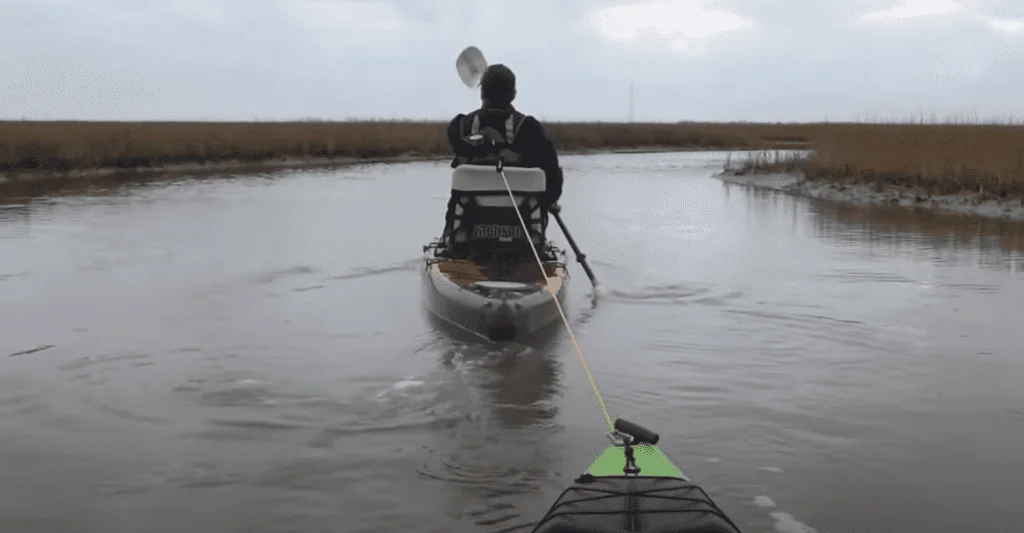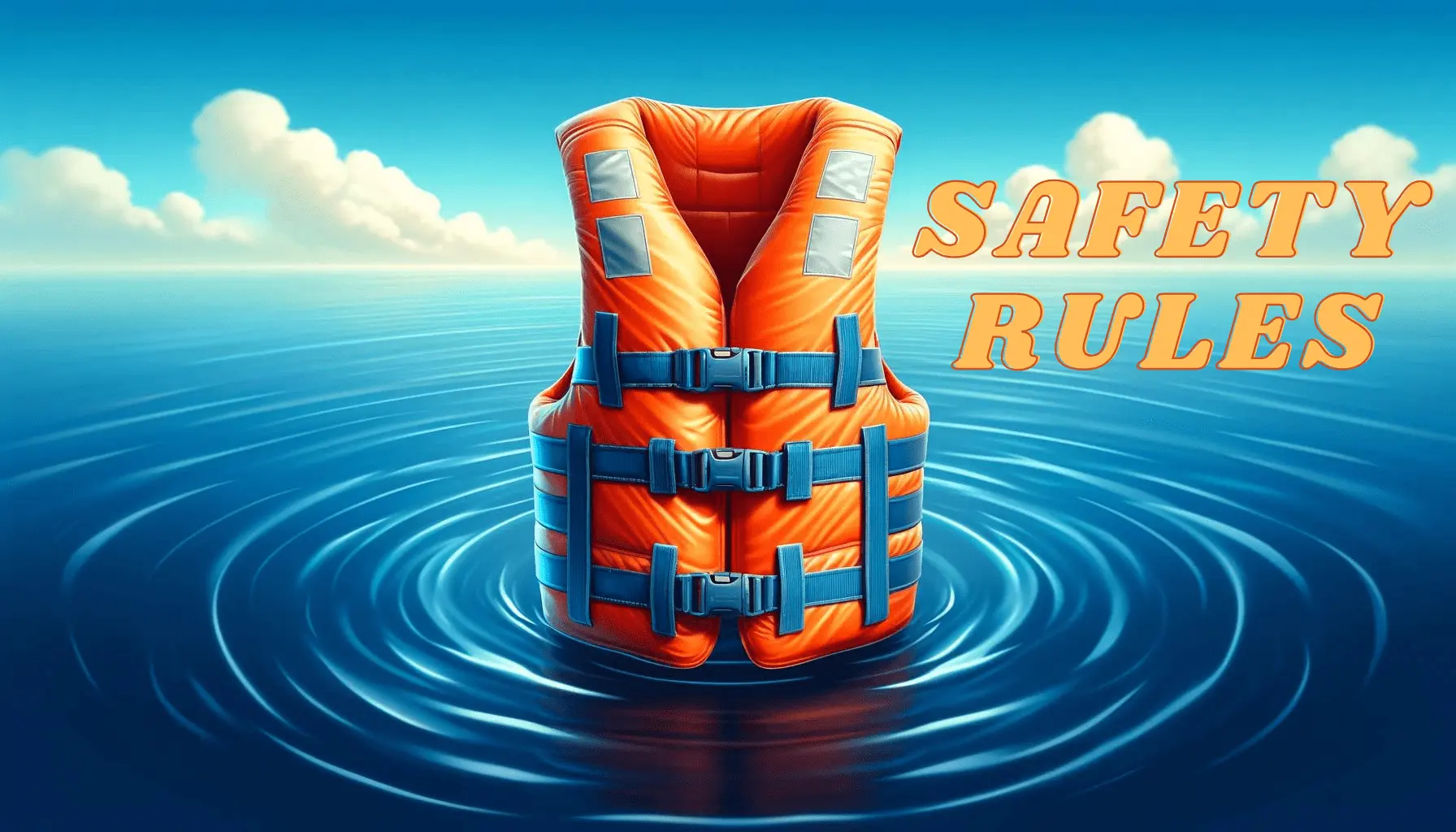When the water becomes your playground, every paddle stroke is a stroke of freedom. Yet, what happens when the unexpected occurs, and adventure turns into adversity? Being versed in the art of kayak towing – the ability to tow a kayak with a kayak – is not just about acquiring a new skill; it’s about ensuring safety and camaraderie on the water. In our comprehensive kayak towing guide, you’ll discover how preparedness trumps uncertainty, and the seemingly simple act of towing can keep the spirit of exploration alive, even when the tides turn against you.
Whether it’s assisting a fatigued friend or rescuing a fellow paddler in distress, learning to tow a kayak effectively can be as crucial as the paddle in your hands. With the right techniques and gear – a marriage of knowledge and hardware – you’ll find that towing isn’t just possible; it becomes a seamless part of your aquatic repertoire.
Key Takeaways
- Understanding kayak towing fundamentals for emergency preparedness on water.
- Choosing and properly utilizing towing gear such as tow belts and quick-release systems.
- Developing skills to tow another kayak efficiently and safely, to guarantee safety in various situations.
- Building the confidence to assist companions effectively during paddling excursions.
- The importance of practice and instruction from experienced kayakers for mastering kayak towing maneuvers.
Understanding the Need for Kayak Towing
In the world of kayaking, being prepared for the unexpected is not just about having the right skills—it’s also about understanding the variety of situations that may call for a kayak to be towed. With the right knowledge and equipment, any paddler can become a valuable asset during such scenarios, helping ensure the safety and well-being of fellow kayakers.
Scenarios That Require Towing
Envision yourself gliding through the tranquil waters when suddenly, you or a companion encounters difficulty. Kayak towing scenarios might involve a kayaker who has become too fatigued to paddle back to shore, suffered an injury that limits their mobility, or encountered equipment failure like a lost or broken paddle. In these instances, the ability to tow effectively could mean the difference between a minor setback and a potentially dangerous situation.
Benefits of Towing Knowledge
Mastering the art of kayak towing brings significant benefits. It cultivates a sense of camaraderie and responsibility within kayaking communities—ensuring that every member has the back of another. This knowledge transcends being a skillset; it stands as a reassurance that one is never alone against the challenges that nature might present. One gains the confidence to venture farther, knowing they can rely on a well-informed network of peers ready to lend a hand—or tow line—when needed.
Essential Kayak Towing Gear
A kayaker’s toolkit is incomplete without essential kayak towing gear. The cornerstone of towing equipment is a tow belt outfitted with a quick-release buckle for safety and ease of detachment. It should be equipped with a sturdy carabiner and floatation device that prevents the tow line from sinking. Knowledge of this gear’s proper use, coupled with regular maintenance, is paramount to ensuring its reliability and effectiveness in towing operations.
Understanding these fundamentals of towing gear and techniques is a staple of watercraft safety practices and is indispensable for anyone who takes to the waters with a love for kayaking and a respect for its challenges.
- Tow belts with quick-release buckles
- Carabiners for secure attachment
- Floatation devices to keep lines afloat
- Kayak towing safety tips for efficient rescue scenarios
With each item meticulously chosen and understood, a kayaker can approach any paddling adventure with peace of mind, prepared to face or provide assistance in any towing situation that may arise.

Preparing for a Kayak Tow Operation
When setting out for a kayaking adventure, preparing a kayak tow operation is a crucial part of your safety checklist. Ensuring you have the appropriate kayak towing system and are familiar with various kayak towing techniques can mean the difference between a routine rescue and a critical situation. It’s not merely about having the gear but also understanding its functionality in different scenarios.
A standard tow belt is an indispensable component of your towing arsenal. Worn comfortably below the Personal Flotation Device (PFD), it incorporates several key features. Generally, it will hold a quick-release buckle which allows for immediate detachment in case of emergency, a coiled length of rope to maintain order and prevent entanglement, and a sturdy carabiner to facilitate the connection between your kayak and the one you are towing. Some systems may also include a float or bungee section to provide buoyancy and elasticity.
Before launching your kayak into the water, take the time to inspect and organize your towing equipment. Verify that your rope is free of knots or frays, and ensure the carabiner is rust-free and operates smoothly. Familiarity with your gear’s operation enhances safety, efficiency, and confidence during a tow.
To start preparing your kayak tow operation, it’s essential to practice coiling the rope neatly—a skill that can prevent precious time loss during an actual rescue. A well-coiled rope allows for easy deployment and retrieval, as well as minimal drag in the water. It is also advisable to practice quick-release mechanisms in a controlled environment to make their use instinctive when under stress on the water.
- Inspect tow belt for wear and proper functionality.
- Ensure rope is neatly coiled and free from knots.
- Perform a check on the carabiner and quick-release buckle to ensure they’re working correctly.
- Practice deploying and retracting the tow line.
- Familiarize yourself with the quick-release mechanism in various scenarios.
By diligently preparing for a kayak tow operation, you will be not only providing a lifeline to fellow kayakers in need but also equipping yourself with the expertise for managing tow operations calmly and successfully. Remember, in kayaking, preparation is as important as execution.
How to Tow a Kayak with a Kayak
Embarking on a water adventure often comes with unexpected scenarios where knowing how to tow a kayak can be invaluable. The key to a successful kayak towing operation lies in meticulous preparation and executing a series of well-coordinated steps, ensuring the safety and efficiency of the rescue.
Assessing the Towing Situation
Before attaching any ropes, it’s crucial to assess the towing situation. This involves evaluating the tow-ee’s physical condition, the environmental factors, and the equipment at hand. Consider if the tow-ee is able to communicate and coordinate during the towing process. Factor in the weather conditions, water currents, and distance to the safe landing point while preparing for the tow.
Communicating with the Tow-ee
Clear and concise communication with the tow-ee sets the tone for a smooth towing process. Discuss the towing plan, signals for stopping or changing course, and ensure they are comfortable and ready for the tow. Maintaining ongoing communication throughout the tow is critical for adapting to any changes in the situation.
Setting Up the Tow Line
When it’s time to set up the tow line, precision is required. The line should be securely fastened to a point on the tow-ee’s kayak that won’t cause it to capsize or fill with water. Ideal attachment points vary, but often the bow or stern handle of the kayak serves as a strong and stable connection spot.

Executing the Tow Successfully
To initiate the tow, first ensure that the line is free of knots and debris. Once the tow line is properly set, begin paddling with deliberate, synchronized strokes. This transfers the power needed to move both kayaks effectively through the water. Steer clear of sudden movements to maintain balance, and adjust your speed according to the tow-ee’s comfort. With the right technique, even in choppy conditions, kayak towing can be performed successfully and both parties can reach the destination safely.
Remember to practice towing in both calm and challenging water conditions to build skill and confidence. Whether rescuing a fellow paddler or simply lending a helping hand, these tips on how to tow a kayak will prepare you for many watersport adventures.
Usage of Towing Equipment and Gear
When engaging in watersports such as kayaking, understanding the towing equipment usage can be the difference between an inconvenient day on the water and a dangerous situation. Towing gear, crucial in emergencies, consists of various systems tailored to different scenarios and kayaking environments. Let’s explore these systems, the care they require, and the safety mechanisms that need to be in place to ensure they function seamlessly in times of need.
Differences in Towing Systems
The diversity in towing systems caters to specific situations and preferences. Some kayakers opt for the kayak towing hitch, which attaches directly to the kayak, providing a solid point of attachment. Others may prefer waist belts for their quick release capabilities and ease of accessibility. Deck-mounted systems offer another alternative, presenting a more permanent and sturdy towline setup. Each system has its place, and the circumstances dictate which is more appropriate.
How to Choose and Maintain Towing Straps and Lines
Choosing the right towing straps and lines is a matter of balance between durability and functionality. Maintenance is just as important as the initial selection – towing straps maintenance is paramount to prevent material degradation due to saltwater and sun exposure. Regular inspections for wear and tear and proper storage are essential steps to ensure the longevity and reliability of your towing gear.
Quick-release Mechanisms and Safety Tips
A vital element across the variety of towing equipment is the quick-release mechanism. In an unexpected turn of events, the need to immediately separate the towed kayak from the towing kayak can be lifesaving. The quick-release is typically a large, easily accessible buckle or pin that can be disengaged even with gloves on or under stress. Safety tips always emphasize practicing how to engage and release these mechanisms swiftly and efficiently.
Appreciating the subtle nuances between different types of towing systems, keeping towing straps in good condition, and understanding the operational aspects of quick-release mechanisms constitute a base layer of knowledge that kayakers should build upon for safer water excursions. With careful consideration and routine maintenance, one can ensure that their towing equipment will not fail when it’s needed the most.

Conclusion
The best way to tow a kayak intertwines a blend of skill, understanding, and the right kayak towing gear. To ensure safe kayaking trips, it is essential to invest time in learning towing methods and equip oneself with the tools designed for this specific purpose.
Whether it’s the calm of a serene lake or the unpredictability of the open sea, the preparedness to tow effectively can mean the difference between a minor inconvenience and a critical situation. The following insights pinpoint the key aspects of towing a kayak which every enthusiast should prioritize:
- Always select towing gear that is robust and tailored to the environment you’ll be paddling in. Whether it’s a simple tow line or a sophisticated tow belt, quality is non-negotiable.
- Understand the dynamics of towing. It’s not just about strength; it’s about the technique. Practice in different water conditions to build confidence and competence.
- Maintain your gear routinely. Inspect tow lines and straps for wear and tear, and ensure that carabiners and buckles are free from rust or damage.
- Familiarize yourself with quick-release mechanisms. In an emergency, the ability to disconnect swiftly can be life-saving.
To conclude, the synergy of top-notch towing gear, honed towing skills, and regular on-water practice forms the trifecta that will bolster your kayaking experiences, making them safer and much more pleasurable.
(Additional Section Not Specified in Outline)
With the essentials of kayak towing covered, it’s imperative to recognize that enhancing and refining your towing skills is a continuous journey. Whether you’re new to kayaking or an experienced paddler, the ability to efficiently tow another kayak can be a pivotal component in ensuring the safety of your waterborne adventures. It’s not only about having the right gear but also nurturing the skillset that can only be honed through persistent practice and real-world experiences.
Drills in a variety of conditions contribute greatly to a paddler’s competence in towing. From calm lakes to the unpredictability of coastal waters, each environment offers unique challenges. Practicing in these settings cultivates an adaptive approach, enabling paddlers to respond effectively to different towing scenarios. This adaptive proficiency is not just beneficial but essential for a harmonious kayaking experience.
It’s worthwhile to occasionally join workshops or courses led by certified kayaking instructors. These opportunities allow for constructive feedback and the acquisition of advanced techniques that could prove invaluable during critical circumstances. In fostering these kayak towing capabilities, one ensures that every trip is marked by preparedness and the confidence to support fellow kayakers in their time of need.
FAQ
What are some scenarios that might require kayaking towing?
Towing may be necessary if a kayaker becomes too exhausted to paddle, suffers an injury, or loses their paddle and cannot make it back to shore on their own.
What are the benefits of knowing how to tow a kayak?
Understanding how to tow a kayak can enhance safety on the water, ensure efficient rescues, and provide support to paddlers in distress, ultimately extending the range and duration of kayaking trips.
What is essential kayak towing gear?
The crucial towing equipment includes a tow belt with a quick-release buckle, a length of rope, carabiners, and a flotation device. These items ensure a stable and secure towing operation.
How should I prepare for a kayak tow operation?
Preparation involves choosing the right towing equipment, understanding how to deploy and use it safely, and ensuring all gear is in good working condition before setting out on the water.
How do you tow a kayak with another kayak?
To tow a kayak, assess the situation, communicate with the person being towed, establish a secure connection using a tow line, and proceed to paddle at a steady pace, ensuring both kayaks maintain stability and direction.
What are the differences in kayak towing systems?
Kayak towing systems vary from waist belts equipped with quick-release functions to deck-mounted setups designed for specific towing conditions. The choice depends on personal preference and the demands of the kayaking environment.
How do you choose and maintain towing straps and lines?
Choose towing straps and lines based on strength, durability, and suitability for the expected conditions. Regularly inspect for wear and tear and replace them if damaged to ensure top performance and safety.
What are quick-release mechanisms and their importance in kayak towing?
Quick-release mechanisms allow the paddler performing the tow to rapidly detach from the tow line in case of an emergency. This feature is crucial for the safety of both the tower and the tow-ee.
What are some kayak towing safety tips?
Ensure you have the proper gear, communicate effectively with the paddler being towed, use quick-release systems for emergencies, monitor conditions, and practice towing techniques to maintain control during the tow operation.
What is the best way to tow a kayak?
The best way to tow a kayak depends on the situation but generally involves using a tow belt system, securing a properly coiled line to the front of the kayak being towed, and paddling at a consistent and controlled speed for a stable tow.



